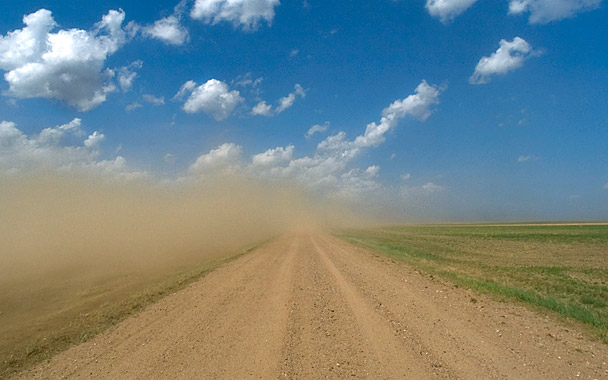
Agricultural News
Drought Management Plans are crucial for Farmers and Ranchers
Fri, 03 Jun 2011 10:21:31 CDT
 Farmers and ranchers have become accustomed to managing through adverse conditions, and drought certainly falls into that category. During the last half of 2010 and the first few months of 2011, most producers have had to manage through drought conditions. Some have managed better than others. There is a common denominator for those producers who cope with drought better than others - they all have active drought management plans. Following is a set of guidelines for developing a drought management plan.
Farmers and ranchers have become accustomed to managing through adverse conditions, and drought certainly falls into that category. During the last half of 2010 and the first few months of 2011, most producers have had to manage through drought conditions. Some have managed better than others. There is a common denominator for those producers who cope with drought better than others - they all have active drought management plans. Following is a set of guidelines for developing a drought management plan.
Know your expected forage production and annual rainfall patterns by season. As a rule of thumb for warm-season perennial pastures (native or introduced), about 70 percent of our annual forage production will occur by July 1 regardless of the total rainfall for the year. The most effective rainfall for our warm-season grasses occurs during the second quarter of the year (April through June), which is typically the most abundant rainfall quarter across the Southern Great Plains. Table 1 shows annual precipitation (including totals by quarter) from 1971 through 2000 for three selected southern Oklahoma counties extending on a line from east (Choctaw County), through Ardmore (Carter County), to west (Tillman County). About 30 to 37 percent of annual rainfall occurs during the spring quarter, in which 70 percent of our annual forage is produced. If precipitation is below average for more than one quarter, drought management plans should be implemented.
Establish conservative stocking rates based on average (or below) moisture conditions, providing an element of flexibility into the stocking rate. For example, with a spring calving cow-calf operation, maintain cattle inventory at about 70 percent of potential stocking rate with the plan to retain ownership of all or some calves through the following spring if moisture conditions are average or better.
Identify target dates to assess pasture conditions and make strategic decisions to keep the operation aligned with the long-term management plan. The most critical date during the growing season is the end of the second quarter, when 70 percent of our forage production should have occurred. At this time, determine production to date and the variance from what was planned or expected. Another critical date is the end of the third quarter when forage reserves for the winter should be determined.
Apply spring fertilizer and herbicides to the most productive introduced grass pastures at the appropriate times. Even if early spring rains are absent, prepare to have fertilizer applied in early May since peak spring rainfall in the Southern Great Plains occurs in May and June.
Maintain a culling criteria list for marketing livestock if drought requires such action. The first category of animals to market in a drought is non-producing stock, such as yearling steers and replacement heifers (usually heaviest weights first - especially in a stocker operation), and open cows. The second category would be producing cows that have poor udders, eyes, feet, teeth, disposition, etc. The third category for culling would be less productive cows, non-uniform cows and the oldest cows.
Wean calves early. It is typically more cost effective to feed early weaned calves through a drought than lactating cows. In addition, the maintenance requirements of a dry cow are about half that of a lactating cow.
If purchasing hay, purchase early in the growing season and only enough for winter use. Do not attempt to feed through a drought. If pasture can be located in another region within a reasonable trucking distance, it is often better to pay for a grazing lease for a short period of time (including hauling cattle to and from the alternate location) than to feed through a long drought spell.
There are no easy answers when it comes to dealing with drought. However, with a good drought management plan in place, a producer is better prepared to take action if drought conditions persist.
Article is written by and courtesy of Hugh Aljoe, of the Noble Foundation.
Click here for more information on managing drought conditions from the Noble Foundation
WebReadyTM Powered by WireReady® NSI
Top Agricultural News
More Headlines...




















